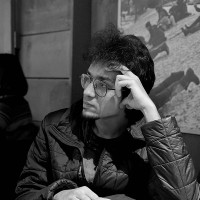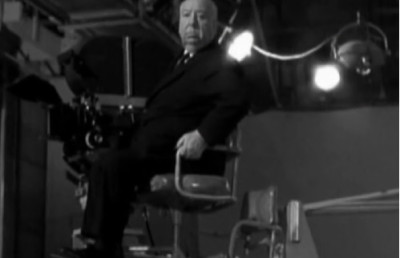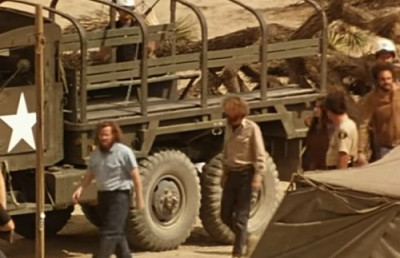Celluloid and Other Intimacies in Geographies of Solitude
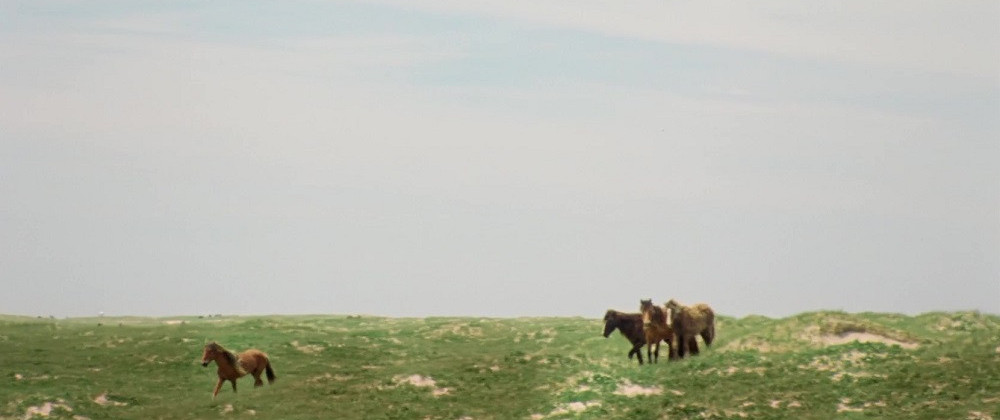
Several speculations encircle the astounding equine population of a genetically unique breed at Sable Island, a sandbar stretch located 300 kilometres off the coast of Nova Scotia, Canada. While some claim the dark-skinned, feral horses first swam ashore after shipwrecks, genetic historicists believe that the British seized them from the Acadians during the “Great Expulsion” 1 and introduced the phenotype to the island (Plante et al. 594). The unmanaged herd of presently over 500 horses have been a subject of interest for conservationists because of their thriving survival on a non-native island without human interference. For the past four decades, Zoe Lucas 2 , a self-styled environmentalist and archivist, remains the only full-time resident of the place, immersed in perusing the island’s ecology – collecting horse manure specimens, endemic insects, or debris of washed-up plastic. In Geographies of Solitude, the Montreal-based filmmaker Jacquelyn Mills attunes to Lucas’ lived presence and observations while rendering them in celluloid with intense sensorial attentiveness. A close attachment ensues between the two as Mills devises absorbing ways of seeing and listening to the island’s ever-shifting, precarious balance of natural forces.
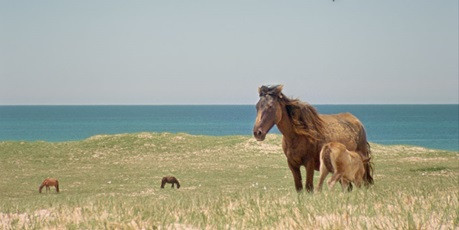
Shot in 16mm film, the documentary’s opening sequence reveals the moonlit contours of a poised Sable Island horse, its untamed mane slyly quivering in the breeze as it exhales a restful neigh. Soon, more horses populate the screen, carving mythically reminiscent silhouettes against the backdrop of a starry sky. As the sound of recurring sea waves permeates the atmosphere, Zoe Lucas saunters across beach dunes led by the trail of her torchlight. From the outset, the film’s immersive design prefigures a language that attends to the sensorial geography of Sable Island rather than a schematised storytelling objective. Jacquelyn Mills focuses on embodied forms of ethnographic knowledge and meaning-making. But something more important is at work in the film that informs its viscerally evocative form. One might refer to the phenomenon as graded intimacies triangulating the relationship between the filmmaker, the film subjects, and the viewers. Here, intimacy manifests as an aesthetic category shaping multiform filmmaking processes.
Housed in a modest basecamp, Zoe Lucas continually archives the lineage, social compositions, mating profiles, and health records of the island’s horses with the undaunted curiosity of a child on the beach. She rummages through dried horse manure to observe gut insects, frequently sketches the patterns of horse coats on her notepad, and exhumes horse skulls while recording everything on an Excel sheet with corresponding GPS locations. Over the past few decades, Lucas has simultaneously archived an exhaustive taxonomy of the island’s invertebrates and non-recyclable litters. She houses separate repositories for every waste material found during her daily walks – a scrapbook of waste balloons, a curtain of plastic strips, a bucket full of plastic bottles, a chandelier made of found glass pieces, etc. The disparate material remains chart a complex landscape of Sable Island’s ecological history, which Jacquelyn Mills imprints onto the celluloid surface.
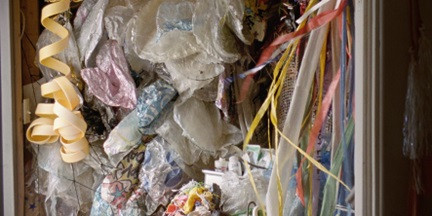
Mills buries a film stock in a compost of horse hair, bones, and sand, exposes it to starlight, and develops in seaweed. Similarly, she splices balloon litter and pastes them on film, uses microscopic shots of balloon particles in Atlantic water, collects night mist on stock, or develops in yarrow. These material intimacies with the celluloid surface result in mesmerising abstract impressions that occasionally appear on the screen as concrete images fade into the background. It betrays a preference for haptic visuals over optical information. As Laura Marks’ formulation of haptic visuality notes, cinematic images can variably mobilise attention around their material properties, surface details, and textures to evoke the sensations of touching and being touched in the viewer (Kuhn and Westwell, oxfordreference.com). Here, Mills literally treats the celluloid film as an apparatus for the tactile reception of different materials. Her techniques are indebted to long-standing experimental and DIY film expressions centred around physicality and sensorial proximity in photochemical processes.
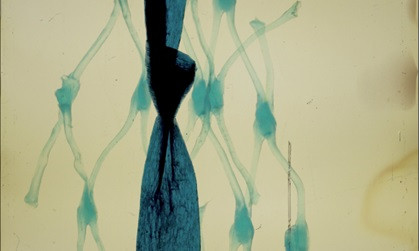
In the 1970s, ‘structuralist’ or ‘materialist’ methods pervaded pre-digital experimental cinema. They reflected on filmmaking processes and the media specificity of apparatuses as their non-narrative ‘content’ (Schneider, 177). Kim Knowles observes the contemporary relevance of photochemical film practices in the purview of our shifting technological environments (analogue to digital to cloud) and adjacent concerns of environmental degradation and waste ecology. She devises the term ‘aesthetics of contact’ to articulate how such practices re-envision the environment by exploring celluloid substrates through physical touch (17). It points beyond ocular perspectives and opens encounters with the subliminal imprints of our deteriorating ecology. In Geographies of Solitude, these experiments develop in an alternative ethnographic method in the tradition of what, in the past two decades, has come to be known as sensory ethnography. Mills shows how the aesthetics of contact figures becomes a modality of generating ethnographic knowledge and a complex sense of a place.
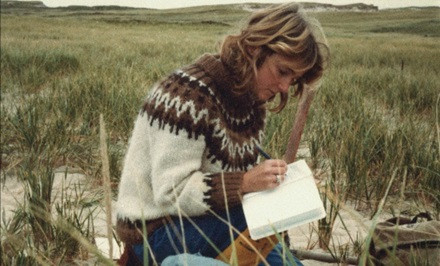
Zoe Lucas, archival photo from the 1980s.
Harvard’s Sensory Ethnography Lab (SEL) productions particularly illustrate how documentaries can create a sensorium around ethnographic subjects that speak beyond verbal or textual elaboration. By attaching a Go-Pro camera to a fishing trawler’s net in Leviathan (Lucien Castaing-Taylor and Verena Paravel, 2012) or using an endoscopic camera to squeeze through internal organs in De Humani Corporis Fabrica (Lucien Castaing-Taylor and Verena Paravel, 2022), the films develop alternative observational methods instead of rallying for distanced objectivity. Jacquelyn Mills undertakes a similar exercise with celluloid material, yet her approach is hardly observational. She cultivates intersubjective intimacies built upon a reparative politics of care, kinship, and protection. The film does not project Zoe Lucas as an evaluative documentary ‘character.’ Her presence dispersedly emerges in conversation with the filmmaker while the camera frames her through wisps of hair, shadows, close-up focus on her working hands, and from partial perspectives. Her untiring attachment to the island and its conservation unfold in chambers of intimacy. Sometimes, Lucas traces the source of balloon litter from paper notes inside and writes letters to the family or shops that flew them.
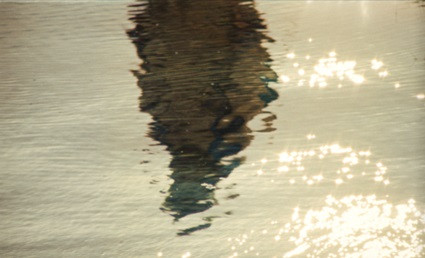
Ironically, solitude becomes impossible for Sable Island’s sole resident in the global economy of oceanic refuse. Lucas’ little hut acts as a shelter for people’s discarded presence amid which she works. Adopting an unhurried pace, she scavenges, cleans, and archives miscellaneous waste materials from the beach with unwavering attention to minute details. In the process, she shares a similar closeness with scrap materials as she shares with the island’s flora and fauna. The film’s aesthetic appeal emerges from its ability to inhabit these zones of intimacy with the viewers. Jacquelyn Mills discards observational authority to forge an experiential connection with Lucas’ work. Her approach aligns more with the feminist critique of Harvard’s SEL projects. According to filmmakers-anthropologists Elena H. Guzman and Emily Hong, the heightened emphasis on unmediated observation flattens the existing relationality and social dynamics between the filmmakers, documentary subjects, and the audience. Their detachment reminisces the problems of colonial-era ethnography that foreclose the pluralities of intersubjective interactions. A “feminist sensory ethnography,” according to Guzman and Hong, intensifies relationality and care against voyeuristic engagement (186).
At least two kinds of practice inform the discourse of sensory ethnography, one which focuses on “aesthetic-sensual” expressions and the other which attends to “multisensorial-experiential” renderings (Nakamura, 133). While the former corresponds to the intellectual and aesthetic progeny of Harvard’s Sensory Ethnography Lab, Jacquelyn Mills’ film resonates more with the latter. British anthropologist Sarah Pink writes that sensory ethnography does not simply mean expanding our instrumental means of collecting and analysing data, where one sensory form of data becomes privileged over others. In her book, Doing Sensory Ethnography, she promotes openness to “multiple ways of knowing and to the exploration of and reflection on new routes to knowledge. (8)” It is about developing non-standardised participatory research processes that evolve in contact with specific contexts, methodological revisions, and intersubjective relations. This openness is the chief element in Geographies of Solitude, concurring with multisensorial and experiential aspects of sensory ethnography. There is a lively inconsistency in the film’s creative method, which amounts to its protean cinematic language without downplaying the critical rigorousness and fieldwork commitment of ethnographic research.
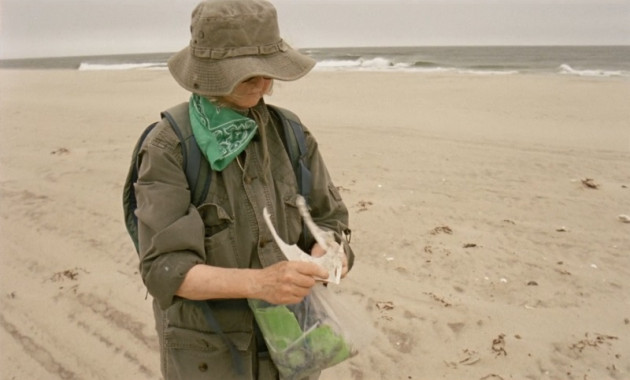
Zoe Lucas in ‘Solitude’
Mills’ treatment of Sable Island’s soundscape further explores the creative possibilities of transcribing, interpreting, and working with sensory responses. Using sensitive electrodes (with what Mills describes as ‘contact microphones’), she captures the footsteps of the Sable Island Calosoma Beetle and renders its current into musical patterns. Repeating the process with a Sable Island Snail and ant colonies, Mills juxtaposes the sounds with the call of a canary, cries of seals, or beats of galloping horses. It results in striking sonorous compositions of natural rhythms steeped in technologically imaginative mediations. Contrary to the practice of recording true-to-life sounds in observational documentaries, Mills treats the island’s soundscape as a generative site of creative participation. Her experiments respond to the premise of soundscape ecology, which maps the acoustic geography of an environment for research application. The field’s scope addresses heterogeneous sources, including biological sounds, ambient rhythms, anthropogenic noise, and inaudible scales and frequencies emanating from a given place (Pijanowski et al. 204). However, the film substantially deals with sonic emittances operating beyond the threshold of aural legibility.
In his book of collected essays, Toward a Sound Ecology, Jeff Todd Titon thinks about the ethical import of orienting ourselves to the sundry range of sounds and their interactions in our environment. Such practice, he argues, would help us imagine new communities, relations, and ways of being based on the ecology of sounds instead of economic rationality and existing social categories (ebook). Mills’ soundscape project in the film interprets different sound sources and weaves them in a curious mix, creating a sonic template for envisioning Sable Island’s entangled associations. She nurtures intimate relations built upon shared frequencies and resonances among living organisms. Her method consciously references the mediating process and relationality in ethnographic exercises. Rather than devising a prearranged framework, the film’s interpretive structure evolves in dialogue with the documentary subjects. And it is by bringing the self and the sensory apparatus into their practice that both – the filmmaker and the ethnographer – develop this processual nature.
Mills’ audio-visual treatment arises from her practice-based ethnographic engagement with multi-sensorial and multimodal forms of communication. But what sustains her endeavour is the close bonding and intimate association she develops with Zoe Lucas over the filmmaking process. Besides being a subjectively-marked record of Sable Island, the film is a testament to this relationship framed with formal and thematic fluidity. One might relate Mills’ practice to what some anthropologists have called “friendship ethnography,” which focuses on adopting the “values, practices, and ethics of friendship in a research context (Stevenson and Lawthom 5).” Defying traditional fieldwork methods, it harps on mutual generosity, compassion, and care to generate emplaced knowledge. This research method depends on the leisurely, organic growth of a relationship between the ethnographer and the participant instead of pre-programmed aims, which makes it less goal-oriented and extractive. Either in tangential ruminations or solitary remarks between long pauses, the conversation between Mills and Lucas occurs in sites of care and intimacy. However, it is not a relationship between the two but includes Sable Island and its biorhythms, taking the viewers along.
“I am not going to give you a straightforward talk or the natural history of Sable Island. This is more about experiencing Sable,” plays a recording of Lucas from her 2015 lecture at the Rotary District Conference. Her voiceover filters the free-flowing visual notes in the Geographies of Solitude without an overburdening load of information. Mills includes archival photographs and an interview clip showing a young Zoe Lucas from the 1982 documentary St Lawrence: Stairway to the Sea by the oceanographer Jacques Cousteau. Yet, a great deal remains equitably unsaid, for these informative bits hardly dilute the film’s experiential density and adroit narrative economy.
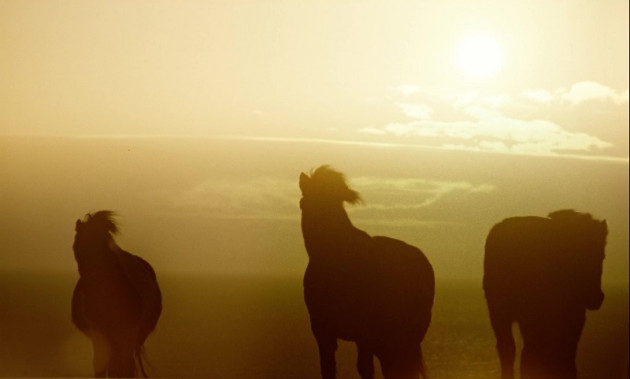
There is considerable literature about Sable Island’s enigmatic history and geography. From Bruce Armstrong’s 1987 book, Sable Island, collecting reminiscences and testimonies about the place, Briana Carr Scott’s picture book for children, She Dreams of Sable Island, Marcia Pierce Harding’s adventure novel, Secrets of Sable Island, to Drew Doggett’s photo-book, Wild: The Legendary Horses of Sable Island, various formats and narrative forms have sketched the isolated sandbar island laden with tropes of bewilderment. In this context, Mills’ methods are relevant as they creatively engage with miscellaneous materialities in the island’s ecology with intimate passion. Close to the end, as Mills runs toward her only remaining film stock after months of shooting, Lucas meditatively reflects on her enmeshed existence amid an unceasing flow of energies and nutrients circulating through the life cycles of Sable Island’s horses and other beings. And, as one might say, the film also succeeds in entering Sable Island’s material-affective currents with celluloid and other intimacies.
Bibliography
Yves Plante et al. “Genetic Diversity in a Feral Horse Population from Sable Island, Canada.” Journal of Heredity. 2007. 98(6): 594-602.
Annette Kuhn and Guy Westwell. “Haptic Visuality (Embodied Spectatorship).” A Dictionary of Film Studies. 2012, https://www.oxfordreference.com/display/10.1093/acref/9780199587261.001.0001/acref-9780199587261-e-0337. Accessed May 23, 2023.
Schneider, Arnd. “Expanded Visions: Rethinking Anthropological Research and Representation through Experimental Film.” in Redrawing Anthropology (ed. Tim Ingold). Ashgate. 2011.
Knowles, Kim. Experimental Film and Photochemical Practices. Palgrave Macmillan. 2020.
Lucien Castaing-Taylor and Verena Paravel. Leviathan. Sensory Ethnography Lab. 2012
Lucien Castaing-Taylor and Verena Paravel. De Humani Corporis Fabrica. Sensory Ethnography Lab. 2022.
Elena H. Guzman and Emily Hong. “Feminist Sensory Ethnography: Embodied Filmmaking as a Politic of Necessity.” Visual Anthropology Review. 38 (2): 188-201.
Nakamura, Karen. “Making Sense of Sensory Ethnography: The Sensual and the Multisensory.” American Anthropologist. 115(1): 132-135
Pink, Sarah. Doing Sensory Ethnography. SAGE Publications, 2009.
Bryan C. Pijanowski et al. “Soundscape Ecology: The Science of Sound in Landscape.” BioScience. 6: 203-216.
Jeff Todd Titon. Toward a Sound Ecology: New and Selected Essays. Indiana University Press. 2020.
Andrew Stevenson and Rebecca Lawthom. “How We Know Each Other Exploring the Bonds of Friendship Using Friendship Ethnography and Visual Ethnography.” Vaneasa Online Journal. 2017. 5(1): 1-20.
Notes
- The forced removal of natives from the Canadian-American territory of Acadia between 1755-1764 ↩
- Lucas is currently the President of Sable Island Institute ↩

